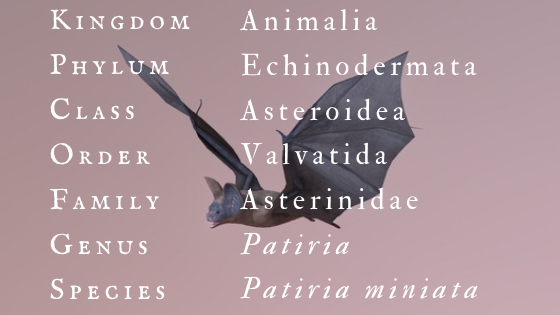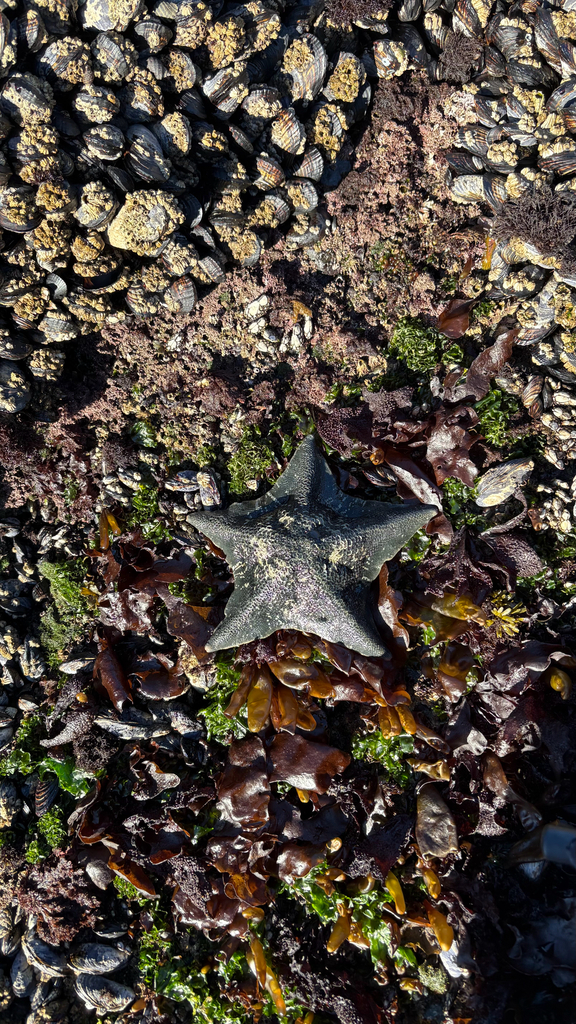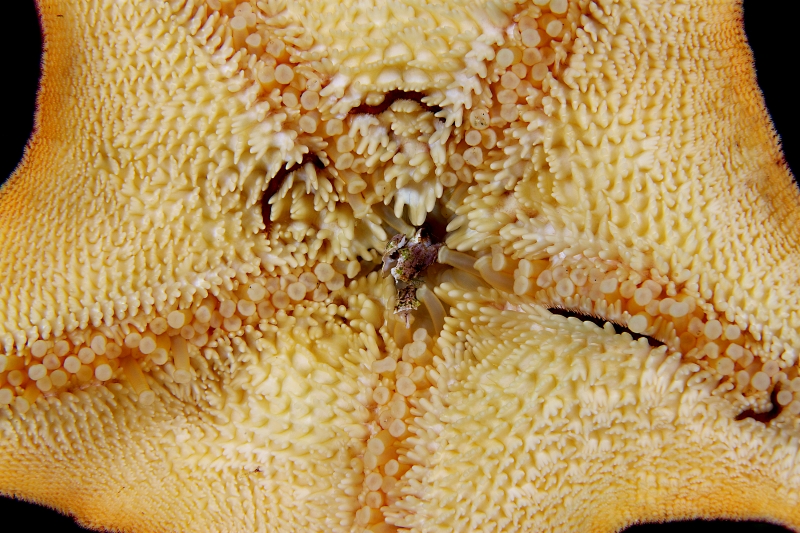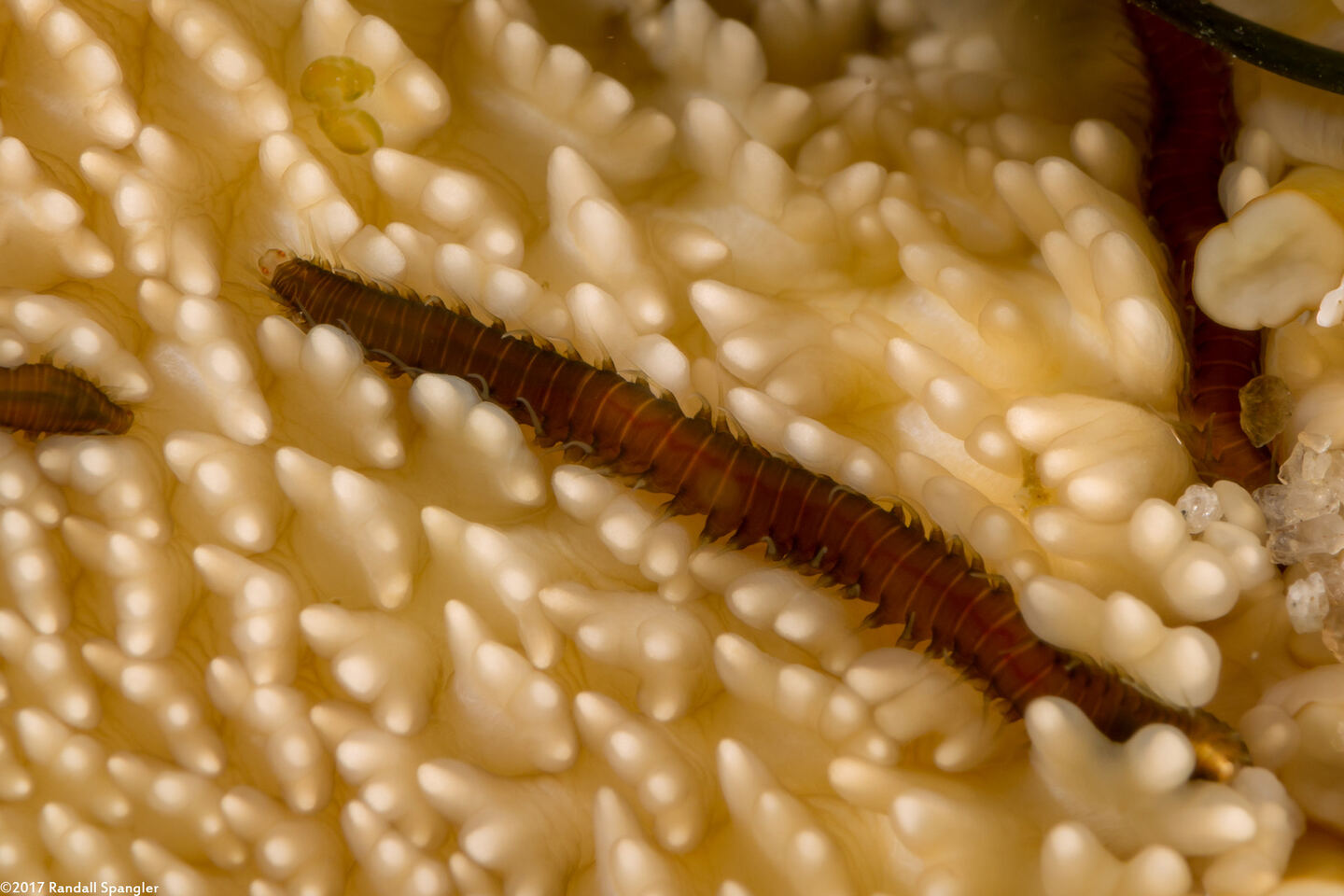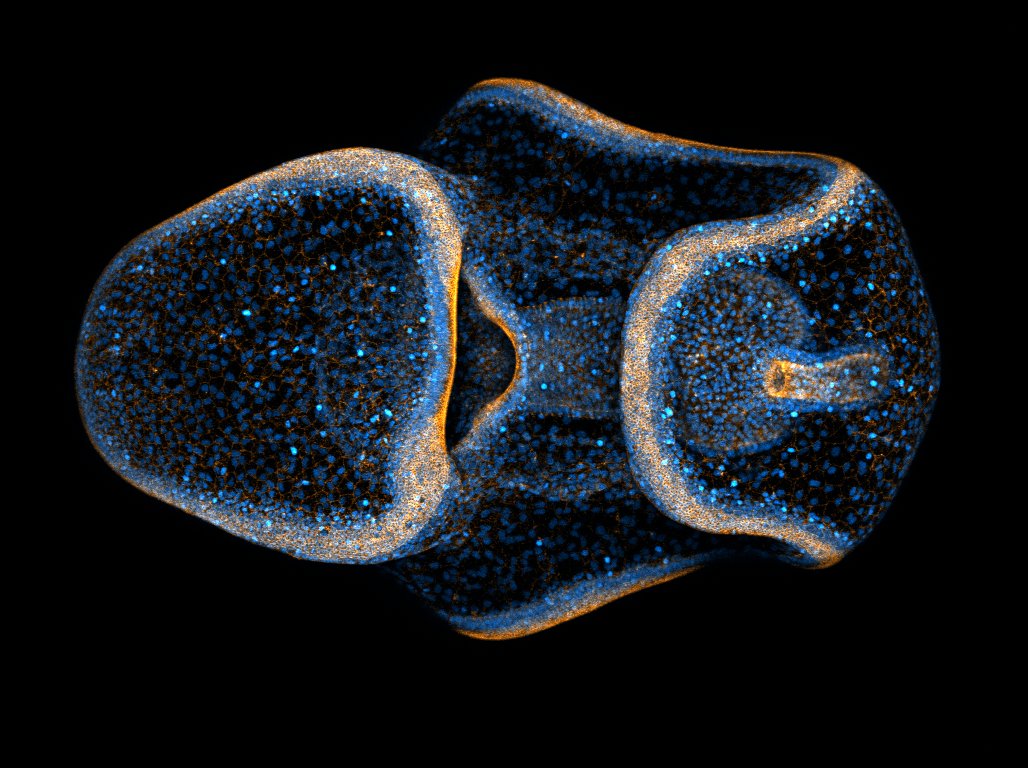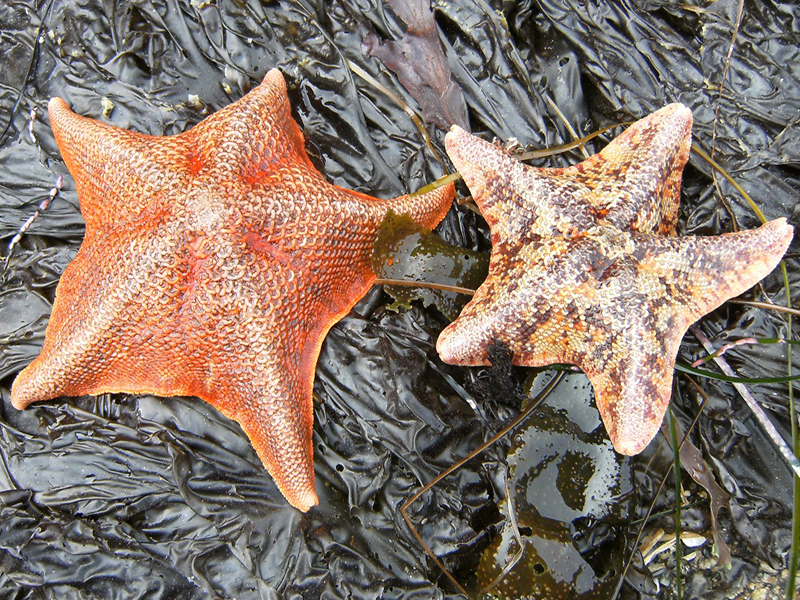
The bat star can be found in a range of spine-chilling colors from blood red to purple-black to ghoulish white. Photo by Dave Cowles, inverts.wallawalla.edu
Come with me if you dare, Critter fans, on a Halloween journey into uncharted territory for our blog – outside of Puget Sound. That’s right, this month we’re leaving the safe and familiar estuarine mud of the Sound for Washington’s dark, moody Olympic coast to highlight an appropriately-themed critter: the bat star.
Winging it
The bat star, also known as the sea bat, webbed star, or broad-disk star, certainly lives up to its name. With fleshy webbing connecting its (usually five but up to nine) arms, this star is one of the most recognizable species on the west coast. Its Latin name, Patiria miniata, means “bright red dish,” and a large dish it is, growing up to 20 cm (8 inches) in diameter.
On the rocks
Bat star at Cape Flattery, WA. Photo by maxmurray, CC-BY-NC, from iNaturalist
One reason we have never encountered a bat star while sediment sampling in Puget Sound is because they are extremely rare in our area, with only one small population existing in the rocky intertidal zone off Cape Flattery, WA, and another west of Vancouver Island. They are much more common in California and Mexico, in the southern part of their range.
The underside of a bat star reveals its tube feet, central mouth, and interlocking skeletal structures called ossicles. Photo by Keoki Stender, MarinelifePhotography.com
Just like real bats, baby bat stars hang around in “caves” – rocky crevices like those found on Washington’s outer coast – and emerge into the open as adults. You won’t catch them upside down, though – an overturned bat star will quickly right itself by using it tube feet and arms.
To the Batcave!
Not only do bat stars seek out caves – they also provide them. Patiria minata plays host to the marine segmented worm (a.k.a. polychaete) species Oxydromus pugettensis, which makes its home in grooves on the sea star’s underside. This bat star commensal worm eats tiny algae and invertebrates from the safety of its mobile Batcave – or would that be its Batmobile?
Three’s a crowd! Commensal polychaetes live on a bat star. Photo by Randall Spangler, CC-BY-NC-4.0
The worms find their host stars by “smelling” their chemical signature in the water, a sensory skill known as chemoreception. A single star can host up to 20 worms at a time, but more introverted worms can easily transfer to another star if they prefer privacy. The worms can also abandon their hosts altogether and live freely on the mud bottom.
Blind as a bat star
Bat stars are blind, but they don’t have bat superpowers like echolocation to help them “see” in the dark. Instead, visual sensors at the end of each arm help them detect light and prey. Generally, the “prey” is algae and surfgrass, but sponges, bryozoans, and tunicates are occasionally on the menu. Bat stars are also important scavengers and detritivores, ingesting dead plant and animal matter they encounter on the sea floor.
Often the bat stars’ meals are bigger than their mouths, and they have to employ a sea star party trick that would make most competitive eaters squirm. They evert their stomachs, shooting them out of their mouths to cover their meal. The food is then slurped up like a smoothie after being liquefied by digestive juices.
Scare tactics
Bat stars have predators of their own to worry about, including other sea star species, mollusks, and crustaceans. Since they can’t exactly escape at super speed, they cover their bodies in a distasteful mucus that deters would-be predators from sinking their fangs in. They also send out a false “bat signal,” secreting chemicals that tell other animals something dangerous is near.
Aside from this bit of deception, bat stars are model citizens… until they encounter another bat star they don’t like. When this happens, a slow-motion slap fight ensues, with the sea stars gently pushing or laying their arms over each other.
Batty for you
No, it’s not a ghost – it’s a bat star bipinnaria larva at the fourth day of development. The blue and orange stains indicate different types of proteins. Photo by Natalie Carrigan, CC BY 4.0, via Wikimedia Commons.
Bat star arms are for more than combat – they’re also for cuddling. Males and females reproduce by releasing sperm and eggs into the water through tiny pores at the base of their arms.
This method of reproduction isn’t unusual, but their long spawning season is. Researchers have used the constant availability of fertilized eggs to extensively study bat star development, including how their un-bat-lievable microscopic larvae eat and swim (and regenerate lost body parts!) in the water column.
And bat’s a wrap.
About the Critter of the Month series
Dany is a benthic taxonomist, a scientist who identifies and counts the sediment-dwelling organisms in our samples as part of our marine sediment monitoring program. We track the numbers and types of species we see to detect changes over time and understand the health of Puget Sound.
Dany shares her discoveries by bringing us a benthic Critter of the Month. These posts will give you a peek into the life of Puget Sound’s least-known inhabitants. We’ll share details on identification, habitat, life history, and the role each critter plays in the sediment community. Can't get enough benthos? See photos from our Eyes Under Puget Sound collection on Flickr.


